An exceptional show.
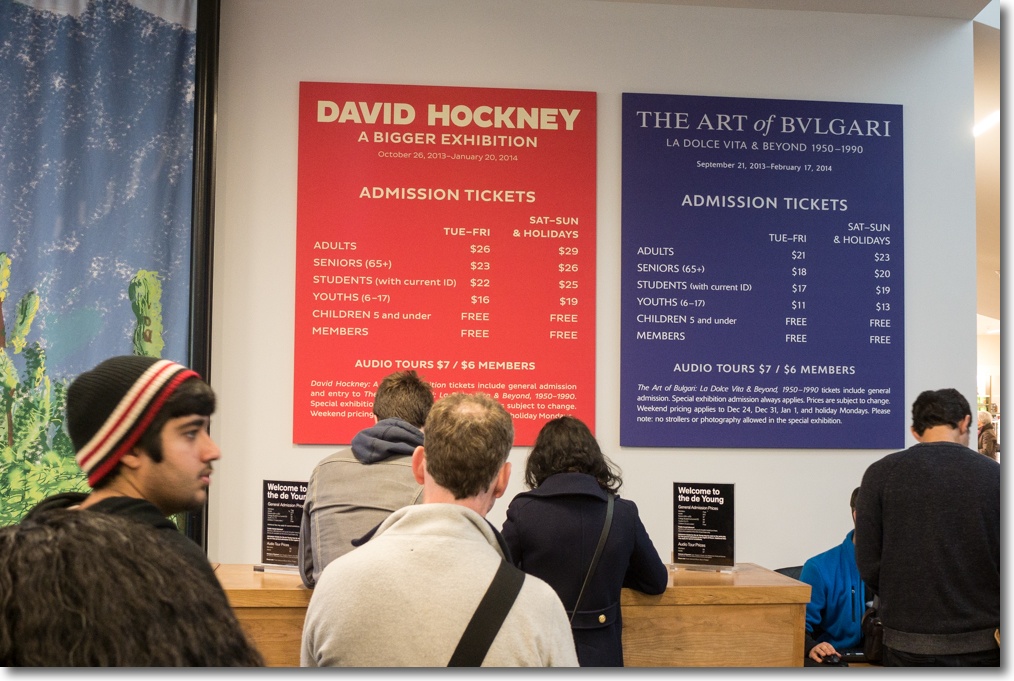
Buying the costly tickets.
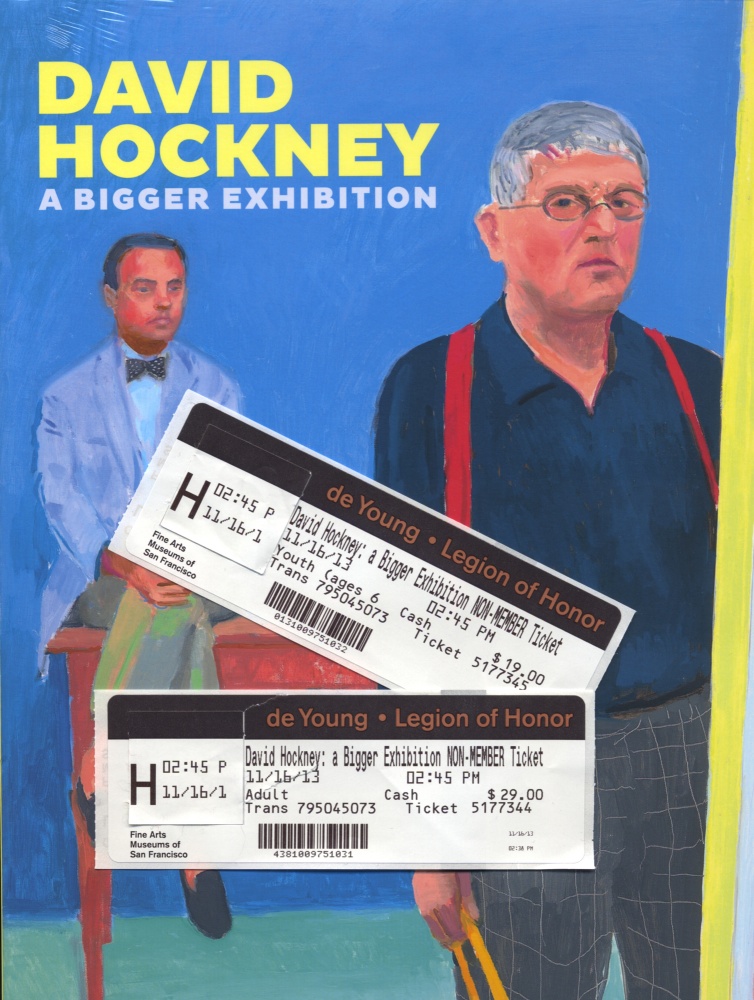
The book of the show – highly recommended.
The David Hockney show at the de Young museum in Golden Gate Park is exceptional in every way and a must see for any photographer. Only works by this prolific artist since 2002 are shown in what is the largest exhibition the de Young has ever mounted. Hockney makes use of modern and traditional technologies in inspiring ways and the New York Times’s critic was bang on in describing him as ‘… one of the greatest colorists since Matisse’, though it has to be added that Raoul Dufy is a kindred spirit.
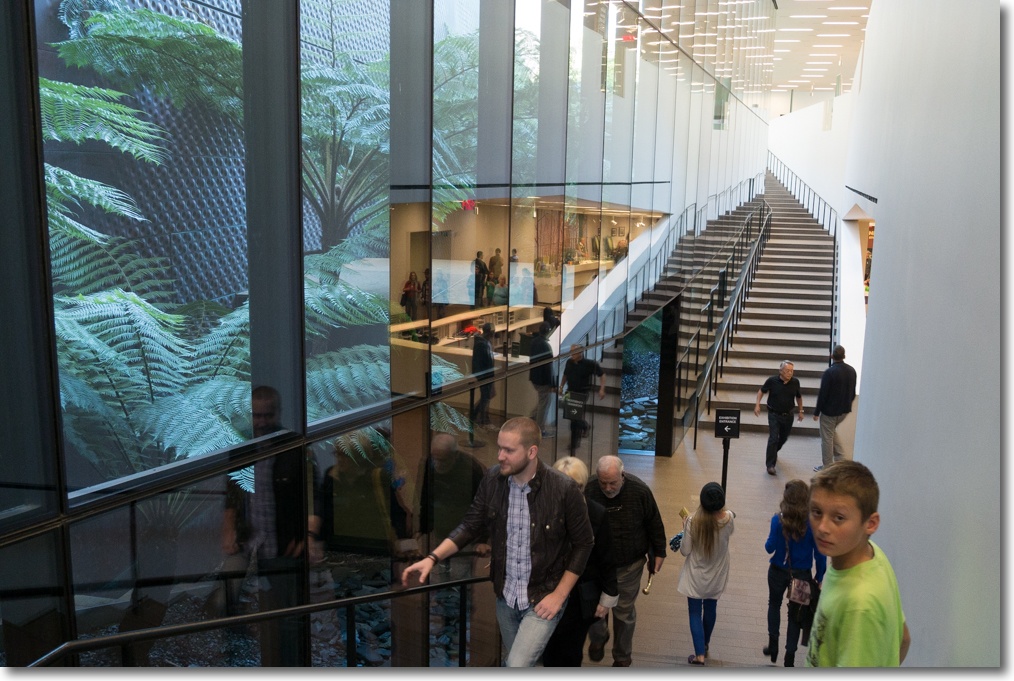
My son Winston approaches the show with unjustified trepidation.
Among the many compelling images on display here are video displays showing Hockney’s iPad compositions in time lapse – quite riveting as you literally see the creation of the work (the artist explains that he discovered that the Brushes app actually records each image creation session) – as well as the huge wall displays of eighteen or more large LCDs showing the beauty of the Yorkshire countryside whence Hockney hails. The last eight years he spent there (he lives in Los Angeles) were exceptionally productive and one room, whose four walls show giant multi-panel paintings of a country lane in each of the four seasons, is perhaps the finest thing in the show. The images are, without exception, joyful and Hockney’s love for his native Yorkshire shines through.
There are also many portraits of his friends done in that somewhat flat and naïve style which maybe could be represented in less volume, but are charming for what they are.
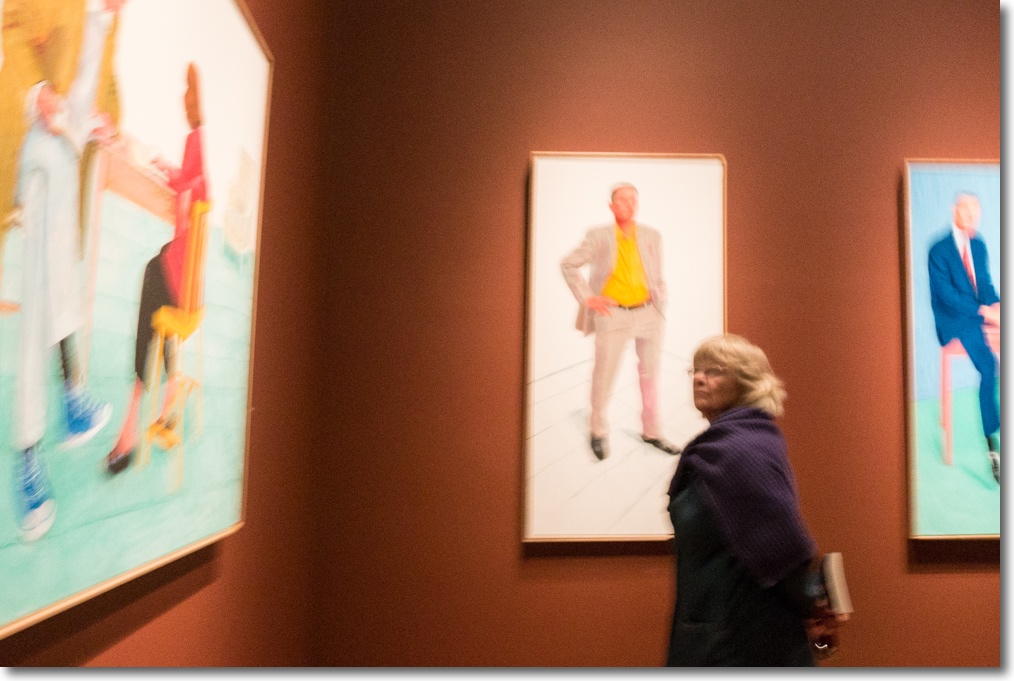
Portraits. No photography allowed.
Another room contains no fewer than twenty-four large LCD panels with motion images of jugglers doing their thing. It’s a lot of fun and reminds us that Hockney never gets pretentious about his art or takes it too seriously. He’s too well grounded in his Yorkshire roots to permit that sort of silliness.
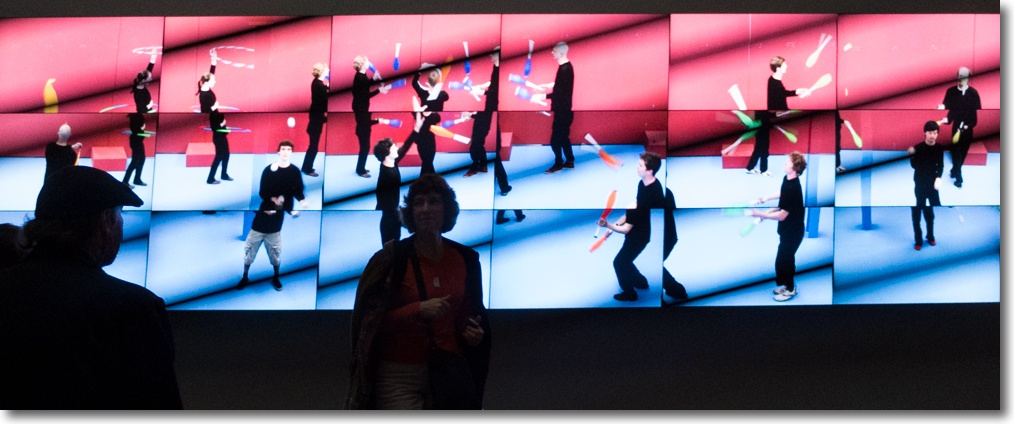
Jugglers.
One large room is dedicated to the ‘Great Wall’, containing Hockney’s clippings of great paintings since 1400 and showing how the use of the camera obscura from around 1420, where painters traced a projected image of the scene in a darkened room, started to affect ways of seeing. The camera may not have been invented for another four centuries but the room shows compellingly how seeing changed with the introduction of technology.
Highly recommended.
All images except the second on the Panasonic GX7 at ISO 3200.